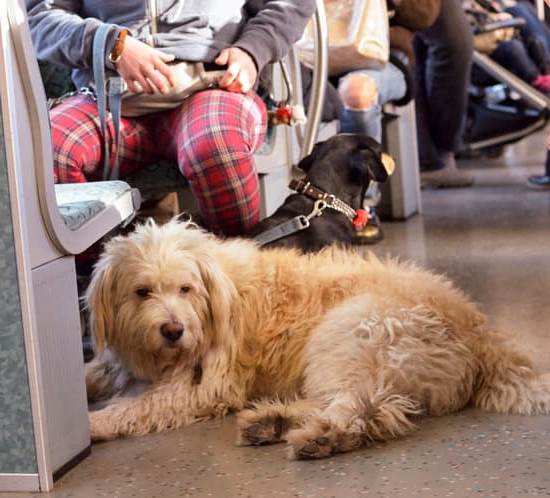How do you train a dog only using treats? Positive reinforcement is a powerful tool that can be used to effectively train and teach your furry friend. By utilizing treats as a form of reward, you can establish a positive training environment and encourage good behavior in your dog. In this article, we will explore the various ways in which treats can be used to train your dog, from basic obedience commands to addressing problem behaviors.
Positive reinforcement training involves rewarding desired behaviors with treats, which encourages your dog to repeat those actions in the future. This method focuses on the positive aspects of your dog’s behavior and helps to build a strong bond between you and your pet. Using treats as rewards can make the training process enjoyable for both you and your dog, leading to a more successful and fulfilling training experience.
In the following sections, we will discuss how to choose the right treats for your dog, basic obedience training using treats, teaching intermediate tricks and behaviors, addressing problem behaviors with treat-based corrections, incorporating consistency into your training routine, gradually phasing out treats, and tips for successful treat-only training methods. With these techniques, you can effectively train your dog using only treats while fostering a strong and positive relationship with your furry companion.
Choosing the Right Treats
When it comes to training a dog using treats, it is crucial to choose the right kind of treats that will effectively motivate and reward your furry friend. Not all treats are created equal, and some may not be as appealing or enticing to your dog.
When selecting treats for training, it’s important to consider the size, taste, and nutritional value of the treats. The key is to find a treat that your dog finds irresistible and is willing to work for during training sessions.
One important factor to consider when choosing treats for training is the size of the treat. Treats that are too large can be difficult for your dog to consume quickly, leading to potential distractions during training. Opt for small, bite-sized treats that can be easily consumed in one or two bites, allowing you to continue the training session without interruptions.
In addition to size, the taste and smell of the treat play an essential role in its effectiveness as a reward during training. It’s no secret that dogs have strong preferences when it comes to flavors and aromas. Some dogs may prefer meaty treats, while others may favor cheesy or peanut butter-flavored snacks.
Understanding your dog’s favorite flavors can help you choose treats that will truly motivate them during training sessions. Ultimately, select high-quality, flavorful treats that your dog truly enjoys and responds well to when learning new commands and behaviors.
Lastly, it’s important to consider the nutritional value of the treats you are using for training. While it may be tempting to rely on low-quality or unhealthy snacks as rewards, it’s crucial to prioritize your dog’s well-being by choosing treats that are both delicious and nutritious.
Look for treats made with wholesome ingredients such as real meat, fruits, and vegetables, while avoiding those with fillers, artificial colors, and preservatives. By selecting healthy yet tasty treats for training sessions, you can ensure that you are rewarding your dog in a way that promotes their overall health and wellness.
Basic Obedience Training
When it comes to training your dog using treats, basic obedience commands are often the first skills you will work on. Using positive reinforcement with treats can be an effective way to teach your dog to sit, stay, and come when called. Here are some tips for incorporating treats into your basic obedience training routine:
- Choose the Right Treats: When teaching basic commands, it’s important to use high-value treats that your dog finds especially enticing. This could be small pieces of cooked chicken, cheese, or commercial dog training treats.
- Timing is Key: When using treats to train your dog, timing is crucial. The treat should be given immediately after the desired behavior occurs to reinforce the action.
- Consistency is Important: Be consistent in your use of treats when teaching basic commands. Every time your dog successfully follows a command, reward them with a treat and plenty of praise.
Now that you understand the importance of choosing the right treats and being consistent in your training approach, it’s time to focus on each individual command.
Sit Command
To teach your dog the “sit” command using treats:
- Hold a treat close to your dog’s nose and slowly move your hand up.
- As your dog follows the motion of the treat with their nose, their bottom will naturally lower down into a sitting position.
- As soon as their bottom touches the ground, give them the treat and praise them enthusiastically.
By following these simple steps and incorporating positive reinforcement through treats, you can effectively train your dog in basic obedience commands like sitting. Remember that patience and consistency are key components to successful treat-based training methods.
Intermediate Tricks and Behaviors
Once your dog has mastered basic obedience commands using treats, you can move on to teaching them some fun and impressive tricks. Training your dog to roll over, shake, and high-five can be a great way to continue building their skills and strengthen your bond with them. Using positive reinforcement and plenty of patience, you can help your furry friend learn these entertaining behaviors.
To train your dog to roll over, start by giving the command “down” and then holding a treat near their nose while guiding them into a lying position on their side. Once in this position, gently roll the treat towards their back so that they follow it with their head and body.
As they complete the full rolling motion, reward them with the treat and praise. Repeat this process multiple times until they start understanding the command “roll over” without needing physical guidance.
Similarly, teaching your dog to shake or offer their paw involves using treats as a reward for the desired behavior. Start with your dog in a sitting position, then extend an open palm towards them and say “shake”. When they raise their paw to touch your hand, immediately give them a treat and provide positive reinforcement. Repeat this process consistently until they begin associating the “shake” command with raising their paw.
For training your dog to high-five, you can utilize a similar approach by holding out your hand palm-upward and giving the command “high-five”. When your dog raises their paw to touch your hand, promptly reward them with a treat and enthusiastic praise. With repetition and consistency, they will eventually understand that lifting their paw in response to the command leads to receiving a tasty reward.
| Trick | Training Method |
|---|---|
| Roll Over | Guide into Lying Position + Treat Reward |
| Shake | Paw Extension + Treat Reward |
| High-Five | Palm-Held Command for Paw Raise + Treat Reward |
Addressing Problem Behaviors
When it comes to addressing problem behaviors in dogs, positive reinforcement with treats can be a highly effective method for correcting these issues and fostering good behavior. Whether your dog exhibits behaviors such as jumping, excessive barking, or pulling on the leash during walks, using treats to redirect their focus and reinforce desirable behaviors can be an invaluable tool in training.
One key aspect of using treats to address problem behaviors is timing. It’s important to offer the treat immediately after your dog displays the desired behavior. For example, if your dog tends to bark excessively when visitors arrive at the door, you can use treats to redirect their attention and reinforce quiet behavior. As soon as they remain calm and refrain from barking, offer them a treat to positively reinforce the desired response.
Another important consideration when using treats to address problem behaviors is consistency. It’s essential to consistently reward your dog for exhibiting the desired behavior while also withholding treats when undesirable behaviors occur. This will help your dog understand which behaviors are rewarded and which are not, ultimately leading to a shift in their actions over time.
In addition to using treats for positive reinforcement, it’s also crucial to address the root cause of problem behaviors in dogs. Often, these unwanted behaviors stem from underlying issues such as anxiety, fear, or lack of mental stimulation. By identifying and addressing these underlying causes while simultaneously utilizing treats for training purposes, you can effectively correct bad habits and foster good behavior in your canine companion.
| Addressing Problem Behaviors | Using Treats |
|---|---|
| Positive reinforcement with treats can correct problem behaviors | Offer treats immediately after desired behavior |
| Consistency is vital in rewarding desired behaviors | Acknowledge root causes of bad habits while utilizing treat training |
The Importance of Consistency
Establishing a Regular Training Schedule
Consistency is key when it comes to incorporating treats into your dog’s training routine. It’s important to establish a regular schedule for training sessions, as this will help your dog understand and anticipate when they will have the opportunity to earn treats through good behavior.
Whether you choose to train your dog in the morning, afternoon, or evening, consistency in the timing of training sessions will help reinforce positive habits and reinforce the connection between good behavior and rewards.
Using Treats for Everyday Situations
In addition to dedicated training sessions, it’s also important to incorporate treats into everyday situations as a way to reinforce good behavior. For example, if your dog sits patiently while you prepare their meal or waits calmly at the door before going for a walk, be sure to reward them with a treat. By consistently using treats in these everyday situations, you are reinforcing positive behaviors and teaching your dog that good manners result in rewards.
Setting Clear Expectations
When incorporating treats into a regular training routine, it’s essential to set clear expectations for your dog. Be consistent in your commands and expectations during training sessions, and always follow through with rewards when your dog fulfills the desired behavior.
This clarity will help your dog understand what is expected of them and how they can earn treats through their actions. By setting clear expectations and being consistent in both commands and rewards, you’ll see more success in using treats to train your dog effectively.
Gradually Phasing Out Treats
Introducing Variable Reinforcement
As your dog becomes more adept at following commands and exhibiting good behavior, it’s important to start incorporating variable reinforcement. This means that you should not reward your dog with a treat every single time they perform the desired action.
By introducing variability in the delivery of treats, you can start weaning your dog off of the constant expectation of a reward for every behavior. This also helps to prevent your dog from becoming too dependent on treats for obedience.
Replacing Treats With Verbal Praise and Physical Affection
Once your dog has mastered a particular command or behavior, start replacing treats with verbal praise and physical affection as a form of positive reinforcement. This helps to transition your dog from expecting food rewards to seeking approval and affection from their owner. Offering enthusiastic “good boy” or “good girl” affirmations, along with scratches behind the ears or belly rubs, can be just as rewarding for your pet as receiving a treat.
Utilizing Environmental Rewards
Another method for phasing out treats during training is by utilizing environmental rewards. This involves using elements in the surrounding environment as positive reinforcement for good behavior. For example, allowing your dog access to their favorite toy after successfully performing a command can serve as an alternative reward to treats. As your dog becomes less reliant on food rewards, they will begin associating positive outcomes with other non-food-related stimuli.
By gradually phasing out treats and incorporating these alternative methods of positive reinforcement, you can effectively train your dog without relying solely on edible rewards. Remember that patience, consistency, and positive feedback are essential when transitioning away from treat-dependent training methods.
Tips for Successful Training
When it comes to using treats to train your dog, there are a few tips that can help maximize the effectiveness of this method. First and foremost, it’s important to choose the right kind of treats for your dog. Not all treats are created equal, and some may be more appealing to your dog than others. Experiment with different types of treats to see which ones are the most motivating for your furry friend.
Another tip for successful training using treats is to be consistent in your approach. This means using treats every time your dog successfully completes a command or behavior that you are trying to reinforce. Consistency is key in any type of training, and using treats as a reward is no exception.
In addition to consistency, it’s also important to be patient when training your dog with treats. Some dogs may pick up on commands quickly, while others may take more time to understand what is expected of them. It’s important not to get frustrated and to continue reinforcing good behavior with treats until your dog fully understands what is being asked of them.
By following these tips for successful training with treats, you can maximize the effectiveness of this positive reinforcement method and set your dog up for success in their obedience training journey. Whether you’re teaching basic commands or addressing problem behaviors, using treats as a reward can be a powerful tool in shaping your dog’s behavior in a positive way.
Conclusion
In conclusion, training a dog using treats can be incredibly effective in promoting positive behaviors and teaching new commands. By leveraging the power of positive reinforcement, dogs can quickly learn to associate good behavior with a rewarding treat, leading to faster and more enjoyable training sessions for both the pet and owner.
One of the key benefits of using treats for training is the ability to establish a strong bond with your dog based on trust and positive experiences. When a dog learns that they will receive a tasty reward for obeying commands and displaying good behavior, they are more likely to continue these actions in the future. This not only makes training easier and more successful but also strengthens the relationship between you and your furry companion.
Additionally, incorporating treats into your dog’s training routine provides an opportunity for mental stimulation and engagement. As you work together on learning new tricks or reinforcing positive behaviors, both you and your dog can enjoy the process of working towards a common goal.
With consistent use of treats as rewards, you can create a harmonious environment that encourages cooperation and mutual understanding between you and your canine companion. So when asking “How do you train a dog only using treats,” remember that with patience, consistency, and positive reinforcement, you can effectively train your furry friend while strengthening your bond.
Frequently Asked Questions
Is It Better to Train a Dog With or Without Treats?
The debate over whether to train a dog with or without treats is ongoing. Some believe that using treats creates a positive reinforcement that encourages good behavior, while others argue that it may lead to dogs only obeying commands when food is present.
What Is It Called When You Train a Dog With Treats?
Training a dog with treats is known as positive reinforcement training. This method involves giving the dog a reward, typically a treat, when they perform the desired behavior. The idea is to encourage the dog to repeat the behavior in order to receive the reward.
How Do You Train a Dog to Use Treats?
To train a dog to use treats, start by finding a high-value treat that your dog loves. Then, use it as a reward for desired behaviors such as sitting or staying.
Be consistent with rewarding good behavior and gradually phase out treats as the behavior becomes more reliable. Remember to always use positive reinforcement and never force the dog to perform an action for a treat.

Welcome to the blog! I am a professional dog trainer and have been working with dogs for many years. In this blog, I will be discussing various topics related to dog training, including tips, tricks, and advice. I hope you find this information helpful and informative. Thanks for reading!





